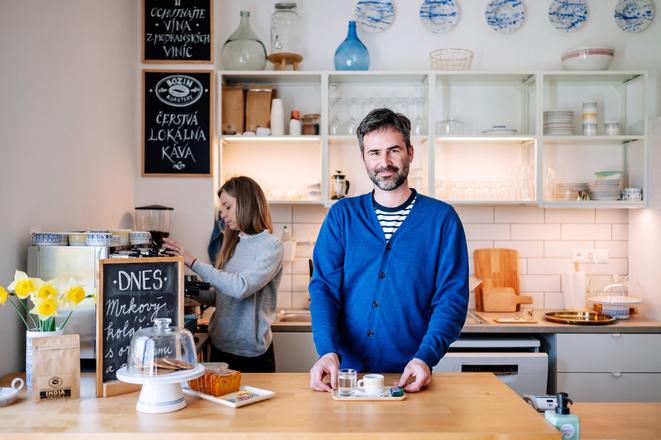He grew up in his father’s ceramics workshop; after completing his studies abroad, he returned to help preserve a unique folk art. However, he chose to approach it differently. He built a brand that draws on the tradition of Modra majolica (in Slovak often called Modranská keramika), but gives it a contemporary feel.
“Everyone knows majolica as something they’ve seen displayed on shelves or hanging on walls. My goal was to make it functional and modern in design,” explains Jakub Liška, owner of the company Modranska.
Originally, majolica was primarily utilitarian, created so that people could eat and drink from it. In the past, the more complex the painted pattern, the more expensive it was. Wealthy people had majolica made with their own monogram, while poorer people bought a jug or bowl with a single-colour glaze.
It was not until the 20th century that Modra majolica became predominantly decorative. It enjoyed popularity during the interwar period, when it was found in the households of intellectuals. During the socialist era, it was a representative gift for life anniversaries.

Inspired by tradition, but with a minimalist twist
“My idea was that people could have a favourite Modra majolica cup at work, from which they would drink coffee every day,” says Liška, who studied ceramics, sculpture, architecture and design.
This idea intertwined with an effort to redesign the original shapes and motifs. Compared to the original Modra majolica, Modranska products have straighter shapes. When working on a potter’s wheel, it is more difficult to create a cup with a straight edge than a round one.
The Modranska motifs are inspired by tradition, but with a minimalist twist. “We use sample books showcasing the Modra majolica, but, for example, we might just take one detail from a complex ornament and use that as the basis,” says Liška.
The collection called Zver (Quarry) depicts, for example, a deer, wild boar or bird; originally, these animals were part of a richly decorated ornament.
“Rich folk ornaments aren’t my cup of tea. I’m not saying I dislike them, but I’m interested in their details. Our animal motifs come from historical ornaments from the 16th century that can be found in castles. The silhouettes of animals painted with natural dyes, and which have a particular graphic beauty, caught my eye,” explains Liška.
In addition to motifs inspired by tradition, Modranska also offers designer patterns. The Mapa (Map) or Ludevít motifs are popular. The latter represents the silhouette of the face of Ľudovít Štúr, a revolutionary politician and codifier of the Slovak language, who spent his final years in Modra.

 Jakub and Nikol Liška want to bring the traditional pottery from shelves back on the table. (source: Modranska)
Jakub and Nikol Liška want to bring the traditional pottery from shelves back on the table. (source: Modranska)